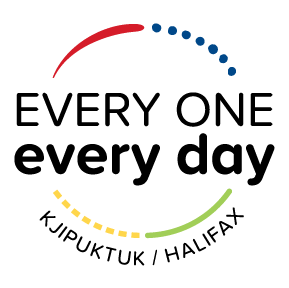Powwow Etiquette: Know Before You Go
By Killa Atencio
As we begin to welcome the longer days, warmth and the sun that summer brings, another thing to look forward to this season are mawiomis (Mawiomi means gathering in Mi’kmaw), also more commonly referred to as powwows.
Powwows are a social gathering where Indigenous people come together to dance, sing, connect with community, meet old friends and make new ones while weaving threads of tradition and spirituality into the fabric of the event. There are two kinds of Powwows: Competition, where registered dancers and singers compete, usually for prize money, and Traditional, which don’t include the same competitive elements but the same cultural richness.
Did you know that every weekend from June to September, First Nations communities across the Atlantic host powwows and are open to everyone? There are a few that happen just outside of the city in neighbouring communities like Sipekne’katik (Indian Brook First Nation) and We’kopekwitk (Millbrook First Nation). Whether you're a newcomer or a seasoned attendee, understanding powwow etiquette is essential for fostering a respectful and inclusive atmosphere.
Firstly, always approach a powwow with an open mind and a willingness to learn and have respect for the traditions and protocols.
The Master of Ceremonies will guide the audience, and will let you know when it is time to stand, and when it comes to photography and videography, they will let you know when taking photos or videos are not permitted, usually during an Honour song or Flag song. If you’re not sure, it’s always okay to ask! Some dancers and participants, outside of the dance arena, may not feel comfortable being photographed, so always ask for individual consent.
Remember that the regalia worn by dancers is not a costume but a reflection of deep cultural significance, and may include sacred items. It’s important to maintain a respectful distance and refrain from touching regalia without permission.
Powwows will always have exhibition style dances where each style of dance is showcased, this is usually reserved for Indigenous dancers in regalia. When invited by the emcee, visitors and spectators may participate in social and intertribal dances that welcome everyone into the dance arena. Again, if you’re unsure, you can always ask!
Many powwows feature a marketplace where artists sell their traditional artwork, handmade crafts, jewelry, and other creations. By supporting these artisans, you're not only appreciating their talents but also contributing to the preservation of culture.
Lastly, summer can get hot - but that doesn’t mean you should show up in a bikini! If you're unsure about what to wear, opting for casual and comfortable attire is always a safe choice, and steer clear of anything that may be appropriative or disrespectful.
In essence, powwow etiquette is about approaching these gatherings with humility, respect, and a willingness to learn. By following these etiquette guidelines, we can all contribute to creating a welcoming and culturally sensitive environment at powwows for everyone to enjoy. Powwows are a celebration of life, so, immerse yourself in the heartbeat of the drum, the vibrant colors of regalia, and the spirit of community, and above all, have fun!
Killa Atencio resides in Kjipuktuk (Halifax), Nova Scotia but is originally from Listuguj First Nation in Mi'gmaq Territory (Quebec, Canada). She shares her voice and culture in many ways – as a poet and spoken word artist, as a visual artist and entrepreneur, and through her work in community, to name a few. Along with her artistic expression, Killa enjoys work that contributes to youth and community development, Indigenous relations and education. She loves travelling to powwows across the region.

